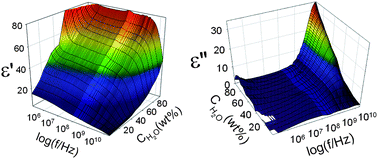Study of micelles and microemulsions formed in a hydrophobic ionic liquid by a dielectric spectroscopy method. I. Interaction and percolation†
Abstract
Dielectric measurements were carried out for binary mixtures of the

* Corresponding authors
a
College of Chemistry, Beijing Normal University, Beijing, China
E-mail:
zhaoks@bnu.edu.cn
Tel: +861058808283
Dielectric measurements were carried out for binary mixtures of the

 Please wait while we load your content...
Something went wrong. Try again?
Please wait while we load your content...
Something went wrong. Try again?
Y. Lian and K. Zhao, Soft Matter, 2011, 7, 8828 DOI: 10.1039/C1SM05491K
To request permission to reproduce material from this article, please go to the Copyright Clearance Center request page.
If you are an author contributing to an RSC publication, you do not need to request permission provided correct acknowledgement is given.
If you are the author of this article, you do not need to request permission to reproduce figures and diagrams provided correct acknowledgement is given. If you want to reproduce the whole article in a third-party publication (excluding your thesis/dissertation for which permission is not required) please go to the Copyright Clearance Center request page.
Read more about how to correctly acknowledge RSC content.
 Fetching data from CrossRef.
Fetching data from CrossRef.
This may take some time to load.
Loading related content
